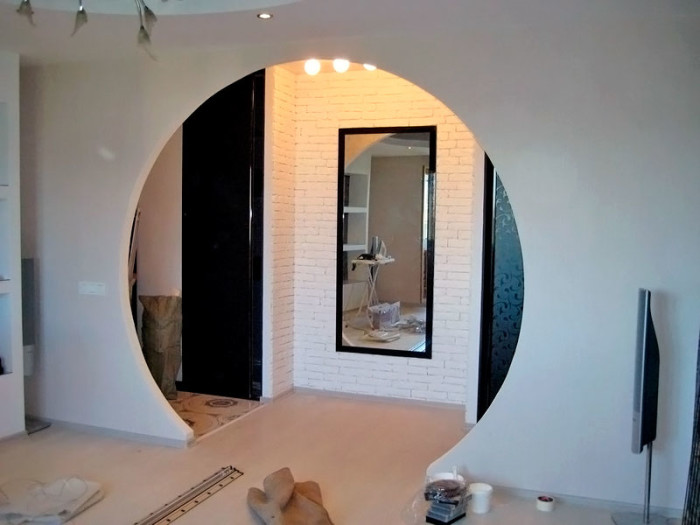
Creative Uses of Drywall in Construction Projects
Drywall is a versatile material that plays a critical role in construction projects around the world. While its primary function is to create walls and ceilings, drywall offers much more in terms of creativity and design flexibility. From modern aesthetic designs to functional solutions, drywall is being used in increasingly innovative ways. In this blog, we will explore some of the most creative uses of drywall in construction projects that are changing the way spaces are designed and built.
Custom Wall Features and Dividers
One of the most creative uses of drywall in construction is for creating custom wall features and dividers. Contractors and designers often use drywall to create visually striking elements like feature walls or partition walls that divide spaces without using traditional framing methods. Drywall can be easily molded and shaped, allowing for the creation of intricate designs that suit the style of any space, whether residential or commercial.
Example: In offices, drywall can be used to create partition walls that separate workspaces or meeting rooms. Similarly, residential spaces benefit from custom drywall designs to highlight a feature wall with unique textures or colors.
Curved Walls and Arches
Drywall’s ability to be molded into curved shapes is another example of its creative potential in construction. Contractors can create stunning curved walls, arches, and other non-traditional designs that wouldn’t be possible with traditional materials like concrete or wood. This flexibility allows designers to craft unique, flowing lines and soft edges that are ideal for modern, organic designs.
Example: Curved drywall is often used in high-end residential designs for creating sweeping, open spaces or in commercial spaces like hotels and restaurants to create an elegant and welcoming atmosphere.
Cove Ceilings and Lighting Features
Drywall is also used creatively to install cove ceilings, which are designed with a curve or recess where the ceiling meets the walls. This design allows for the integration of indirect lighting, such as LED strips, to create ambient lighting effects that can completely transform a room’s atmosphere. Cove ceilings and lighting features add a subtle yet dramatic effect to any space, whether in homes, offices, or commercial buildings.
Example: High-end hotels and modern office spaces frequently use drywall to create cove ceilings with integrated lighting, enhancing the space’s ambiance and functionality.
Drywall Ceilings with Acoustic Properties
In spaces where soundproofing is important, drywall can be used in creative ways to improve acoustics. Acoustic drywall is designed specifically to reduce noise transmission between rooms and is commonly used in theaters, conference rooms, music studios, and residential spaces like apartments. This type of drywall can be used to line the ceiling, walls, and even floors to create soundproof environments.
Example: In a music studio or office building, drywall with soundproofing capabilities helps control noise levels, preventing distractions and maintaining privacy.
Textured Wall Finishes
Drywall is often used as a base for textured finishes, allowing for endless creative possibilities. From smooth, modern looks to rustic, vintage textures, drywall can be adapted to fit any interior design style. Plastering, joint compound, or even 3D texture applications can be used on drywall to create unique surfaces that enhance the room’s ambiance.
Example: In living rooms or dining areas, textured drywall surfaces can add a modern or artistic touch. In commercial settings, textured walls can create a memorable brand experience or set a particular tone.
Drywall in Multi-Functional Spaces
As space becomes more valuable, particularly in urban environments, drywall is being used in innovative ways to create multi-functional rooms. For example, drywall can be used to design hidden rooms, sliding walls, or foldable partitions that allow spaces to serve different purposes. This is especially common in tiny homes, lofts, and multi-use commercial spaces.
Example: In an open-plan apartment, drywall can be used to create retractable partitions that divide the space into a home office during the day and a bedroom at night, offering flexibility without permanent changes.
Drywall as a Decorative Element in Furniture
One of the more unexpected creative uses of drywall is in furniture design. Some designers have explored drywall as a material for furniture, such as desks, tables, and shelving units. This is particularly appealing in interior design projects that favor minimalist or industrial aesthetics, where drywall’s raw texture can serve as an interesting material choice.
Example: In commercial office spaces, drywall can be used to create stylish and minimalist desks or storage units that complement the overall aesthetic.
Conclusion
Drywall is no longer just a basic building material. As construction techniques evolve, drywall is being used in increasingly creative ways to enhance design flexibility, improve functionality, and create unique interior spaces. From custom feature walls to soundproofing solutions and innovative furniture design, drywall offers endless possibilities for construction professionals and designers.
Call to Action
Are you ready to explore the creative potential of drywall in your next construction project? Contact us today to discuss how drywall can be used in innovative ways to elevate your design, enhance functionality, and transform your space! Whether you’re looking for acoustic solutions, custom features, or sustainable options, we have the expertise to bring your vision to life.